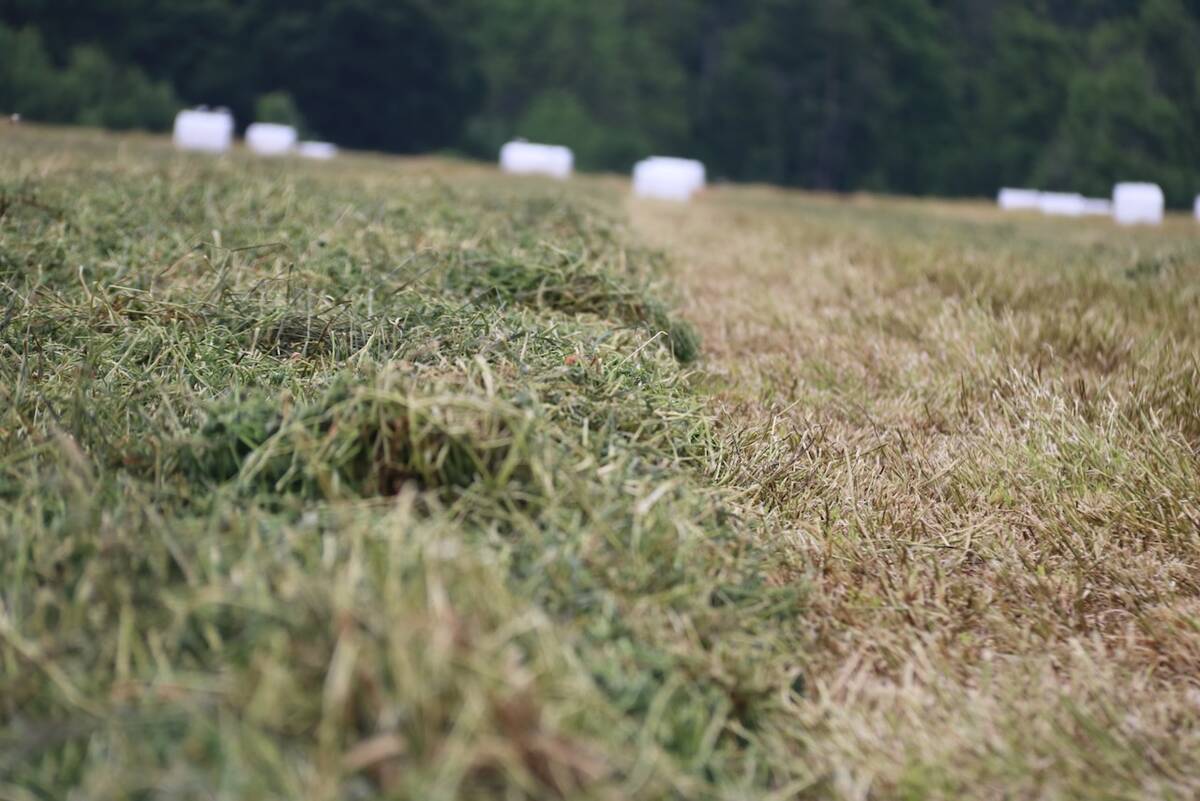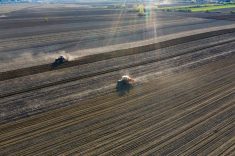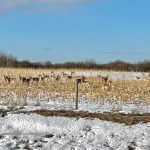The productive top layer of Prairie soils is relatively thin. Once it’s lost, it can take years to recover
Once topsoil erodes, it is slow to recover. Research indicates that “the estimated loss of a quarter inch would take over 10 years to replenish, assuming no further erosion occurs,” says Murray Lewis, land resource specialist with the Agriculture and Agri-Food Canada’s Saskatoon Research Centre.
Erosion is an ongoing issue that will always require management.
“As climatic conditions and farming systems change, it will be necessary to evaluate and re-evaluate erosion control management strategies,” says Lewis. The best proactive plan is regular erosion monitoring.
Four risk factors
Read Also

New high-performance forage training program to launch in 2026
A new Canadian Forage and Grasslands Asssociation high-performance forage program will be a resource for farmers, agronomists and others in the forage sector.
Wind erosion has two distinct actions: soil detachment and movement.
“All wind erosion control practices are based on preventing detachment or reducing the carrying capacity of wind,” says Lewis.
“A number of wind erosion control practices can be adopted, depending on producers’ farming system and risk factors.”
One potential risk factor is climate.
“Climatic risks vary with each region,” says Lewis. “Areas such as Southern Alberta tend to have higher climatic risk factors throughout the winter, due to periods without snow cover, frequent high wind speeds, and the freeze/thaw action of Chinooks. Other regions are more concerned about the spring or fall.”
A second risk is crop residue.
“Adequate crop residue and/cover crops are the most effective way to control wind erosion,” says Lewis. “Crop residue builds soil organic matter, creates stable soil aggregates, conserves soil moisture, and protects the soil surface from erosive forces.
“The widespread adoption of chemical fallow, minimum tillage, and direct seeding has greatly reduced erosion risks across the prairies by conserving crop residue.”
A third possible risk concerns texture.
“Soil texture is one of the key wind erosion risk factors,” said Lewis. “Research indicates that sandy soils (more than 70 to 75 per cent sand and less than 10 to 15 per cent clay) and clay soils (more than 40 per cent clay) tend to be more susceptible to wind erosion. In the case of sandy soils, they tend to form poor aggregates, easily broken down into erodible-sized particles.”
Different soils behave differently. “Clay soils can be broken into small erodible fractions by tillage or freeze/thaw processes, while loam soils (a balance of sand, silt, and clay) tend to be the most resilient to erosion.” (Although tillage, dry soil conditions, and lack of crop residue can put loam soils at risk.)
A fourth risk factor is surface roughness.
“Significant surface roughness (large aggregates or ridges) can disturb wind flow and reduce its carrying capacity,” says Lewis. “Surface roughness is only a factor for land lacking adequate crop residue.”
Seven ways to control erosion
Depending on the farming system, wind erosion control best management practices can include agronomic management, chemical fallow, reduced tillage, direct seeding, soil ridging, low disturbance tillage, cover crops, organic additions (such as manure or straw), shelterbelts and combinations of these.
1. Consider agronomic choices: “Erosion management starts with optimizing crop agronomy, such as seeding date, seeding rate, and fertility, which improves root growth and biomass production,” said Lewis. “Extended and diverse crop rotations, such as rotations with forages, are also beneficial. These practices increase the soil’s resilience to erosion by improving soil quality, soil biology, binding soil particles together and protecting the soil surface.”
If a winter crop is planted only for erosion control, Lewis still suggests following recommended agronomic practices, such as “seed early, seed heavy, seed shallow, and seed into standing stubble.”
2. Adopt minimum tillage: “The adoption of minimum tillage technologies has been one of the most significant advancements for prairie agriculture and land sustainability. Crop residue conservation builds soil quality and resilience to degradation. Other benefits of minimum tillage include soil moisture conservation, nutrient availability, and improved drainage.
Lewis says, “If tillage is required to manage soil moisture or compaction issues, vertical tillage implements tend to disturb the soil less than others.”
3. Use cover crops: “Cover crops are an excellent option for erosion control, however they need to be seeded early to be effective. Soil disturbance at harvest incorporates the seed and provides supplemental erosion control, however effectiveness is dependent on harvest date.”
4. Use organic amendments: Lewis says organic amendments, such as straw and manure, can be effective and build soil quality.
5. Create ridges: Where there are soil ridges and residue, wind flow will be disturbed. In some cases, this can lower losses from erosion. “Dryland producers can ridge soil to create surface roughness, spread straw, set up some type of wind barrier, or spread manure,” says Lewis.
6. Plant shelterbelts: Trees can reduce erosion. “Properly planned field shelterbelts provide many benefits to the agricultural community,” Lewis says. “The main benefit is wind reduction, reducing wind velocities for up to 20 times their height.”
7. Don’t burn: “Burning crop residues is generally a high risk practice with negative implications for soil erosion,” Lewis says. Burning exposes soil to erosive sources, while destroying a valuable soil-building resource. Rather then burning, Lewis says, “Excessive straw can be managed by practices such as chopping and spreading, bailing excess straw, and seed drill selection.
“Research seems to indicate that excess crop residues can be removed without impacting soil organic matter levels and erosion control. Harvesting residue from land that is at significant risk to wind erosion is generally not recommended.”
In the long run, the costs of minimizing erosion may be worth the benefits, Lewis says. “Proactive soil management is relatively easy and cost effective. Reclamation can take years to achieve and comes at a significant economic cost.
David A Lobb is a Professor in the Department of Soil Science at the University of Manitoba (U of M).
“The most effective wind erosion control measure is maintaining crop and crop residue cover on the soil,” said Lobb. “This protects the soil from the erosive force of the wind. Shelterbelts can also provide some wind erosion control by reducing the erosive force of wind.”
Lobb’s research, teaching, and extension activities are in the areas of soil erosion, soil and water conservation, and sustainable agriculture.
“Although we can regularly see dust blowing in agricultural landscapes, the actual soil loss within fields is probably negligible,” said Lobb.
“The extreme events resulting from the massive 1930s dust storms are very rare and the soil losses observed during that time may never be reproduced.
“However, we still need to be concerned about wind erosion. Even small amounts of it and soil loss may result in considerable crop damage by sand blasting, and may result in enough dust to create air quality problems.
“It is extremely important to monitor field conditions to accurately assess potential problems and to manage them effectively… assessing wind eroded sediment along ditches, treelines, and fencelines.” †














